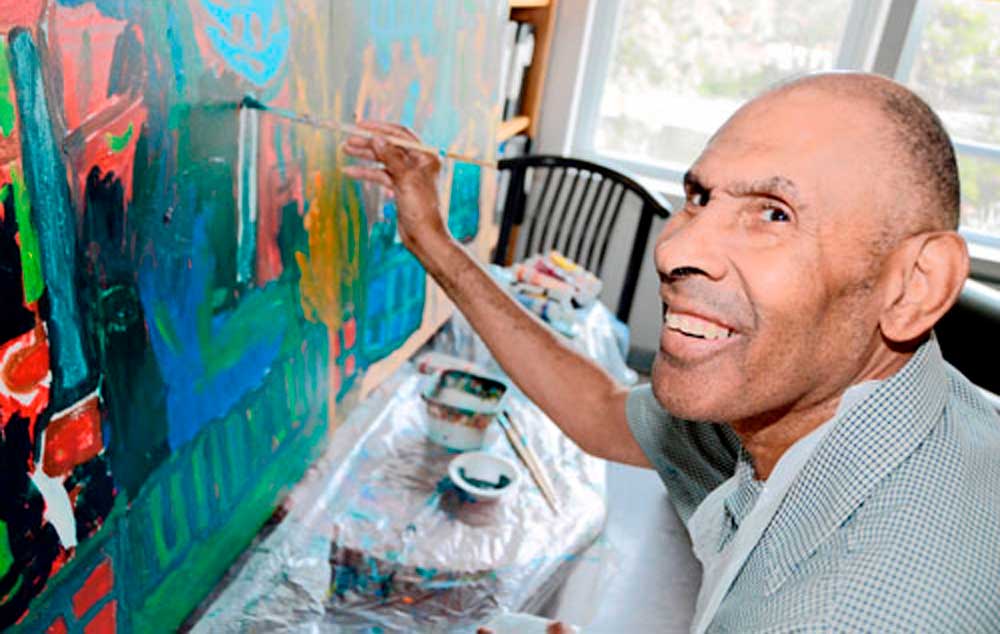
Brooklyn Museum displays works by boro’s disabled artists
The Brooklyn Museum is lending its walls to disabled artists – giving visitors a unique perspective on the struggles and achievements of an under-appreciated group of artists.
The exhibit “Inner Landscapes: Emotions Reflected Through Art” opens Aug. 16 with paintings by residents and of clients of the Institute for Community Living, a 26-year-old not-for-profit that services New Yorkers with a range of disabilities.
Many of the works speak loudly about the lives of the artists, like one by James Wilson, who is intellectually disabled and used painting as a means of discussing an encounter with police.
“Some of them had to do with artists’ feelings about their situation, and their political circumstances,” said Dylan Stanfield, the Institute’s arts counselor. “[Wilson’s piece] deals with his experience being stopped and frisked by the police in his neighborhood.”
Wilson was inspired by a sculpture by a South African artist that he saw during the Institute’s monthly trips to the Brooklyn Museum — which are followed by discussions lead by Stanfield about the works on show and the messages that the artists behind them were trying to express.
“The emotional journey of the artist is important because what we’ve been striving to do through this program is give a voice to these people so they can share their view on the world,” said Stanfield.
The Institute’s artists are using painting to express themselves — and they’re having fun doing it.
Since starting the program, Wilson says art has become one of his passions.
“It’s my favorite thing, going to the museums and doing paintings,” said Wilson.
Stanfield said that having the Brooklyn Museum display the work is key to getting more Brooklynites to relate to the lives and emotions of the disabled.
“A lot of times artwork from this population is not taken as seriously as it should be. By changing how it’s presented, though, we change the discussion and help people see them in a different way,” Stanfield said.
Source: The Brooklin Paper
Compartilhe
Use os ícones flutuantes na borda lateral esquerda desta página
Siga-nos!
Envolva-se em nosso conteúdo, seus comentários são bem-vindos!
Artigos relacionados
Teleton AACD. A pessoa com deficiência como protagonista.
Teleton AACD. A pessoa com deficiência como protagonista. Uma iniciativa internacional abraçada pelo SBT no Brasil.
Acessibilidade no ESG. Equipotel aborda o tema para o turismo.
Acessibilidade no ESG, para o mercado do turismo. Equipotel aborda a importância da inclusão da pessoa com deficiência.
Morte Sobre Rodas. Filme inclusivo foi candidato ao Oscar.
Morte Sobre Rodas. Dois protagonistas do filme, são pessoas com deficiência, um usuário de cadeira de rodas e outro com paralisia cerebral.






0 comentários